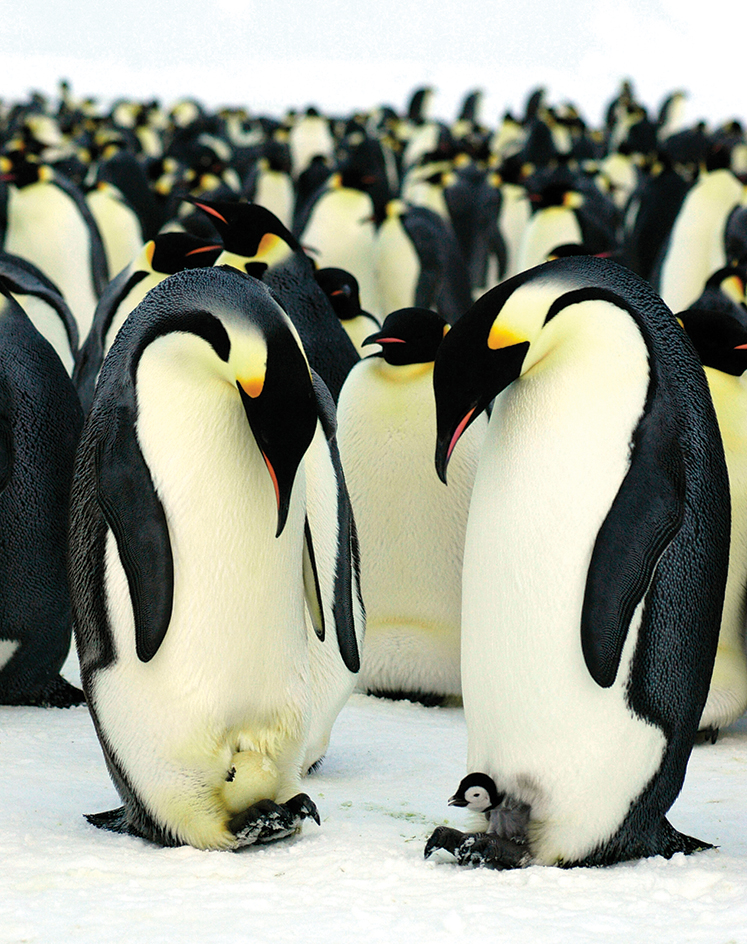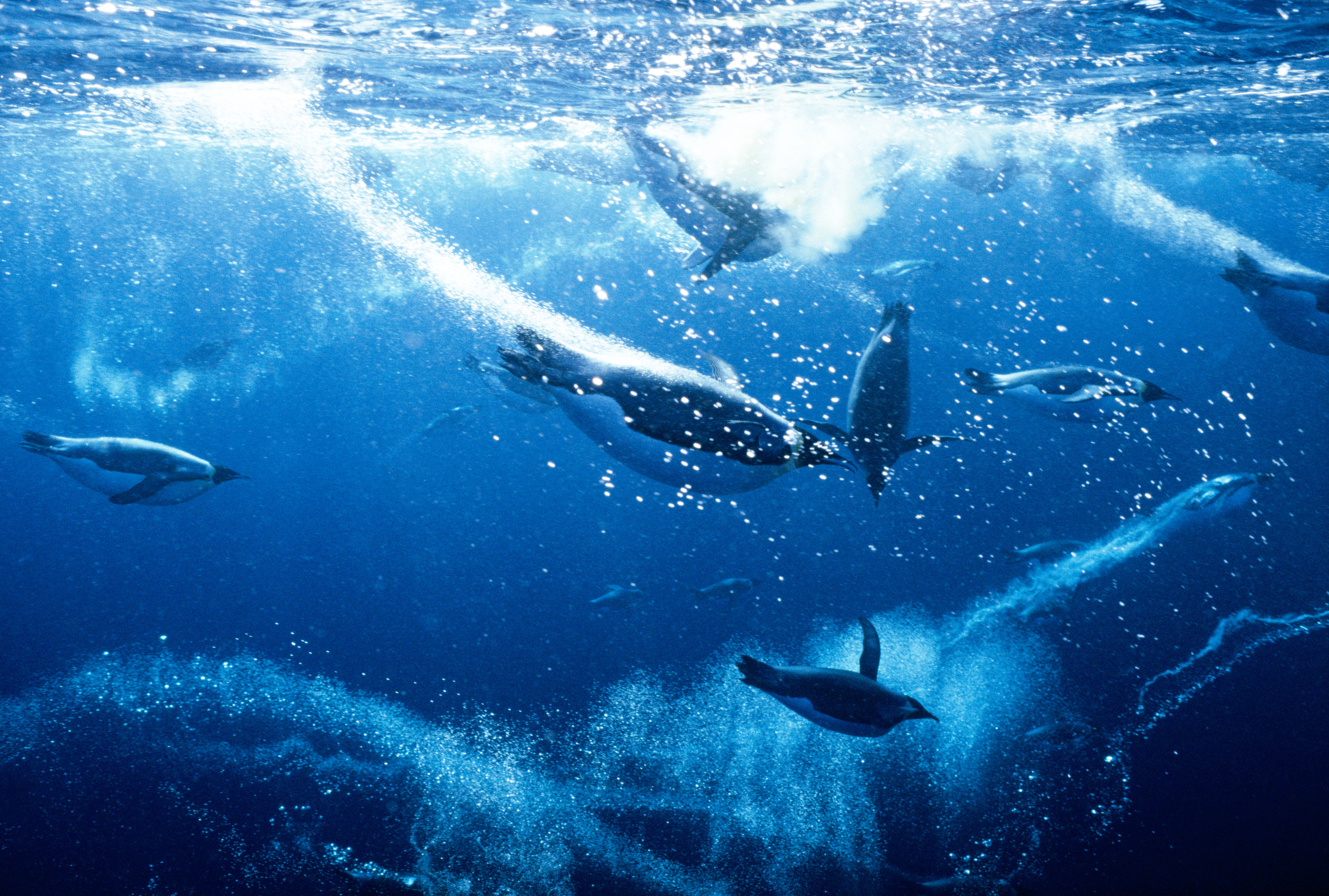Emperor penguin is the largest of all penguins. Adults are usually about 3 feet (1 meter) tall and weigh as much as 100 pounds (45 kilograms). An emperor penguin is heaviest just before breeding. Like other penguins, the emperor penguin does not fly. Instead, it swims by beating its flippers. The emperor penguin lives in Antarctica. The bird is bluish-black on its back and flippers, with a pale underside. It has bright orange-yellow ear patches.

Emperor penguins can dive to nearly 2,000 feet (600 meters) deep. They can remain underwater for 20 minutes or more, though most dives last for much less time. The birds dive to feed mainly on fish, krill, and squid. They are fed upon by leopard seals and killer whales.
Emperor penguins are among the only animals that spend the winter in Antarctica. They journey across the sea ice to nesting colonies. At these colonies, each female lays a single egg and transfers it to the male. The females then return to the sea to feed. They travel up to about 62 miles (100 kilometers) each way.
Male emperor penguins eat no food for about four months, losing half their body weight. They balance the eggs on their feet, keeping them warm with their belly. Air temperatures outside the colony may fall below –20 °F (–30 °C), with winds up to 125 miles (200 kilometers) per hour. To conserve warmth, the males huddle together in a group. They take turns on the group’s edges, limiting each male’s exposure to the cold winds. The females return shortly after the eggs hatch, allowing the males to return to the sea. The two parents then alternate trips to the sea to feed and bring back food for the newly hatched chick.

